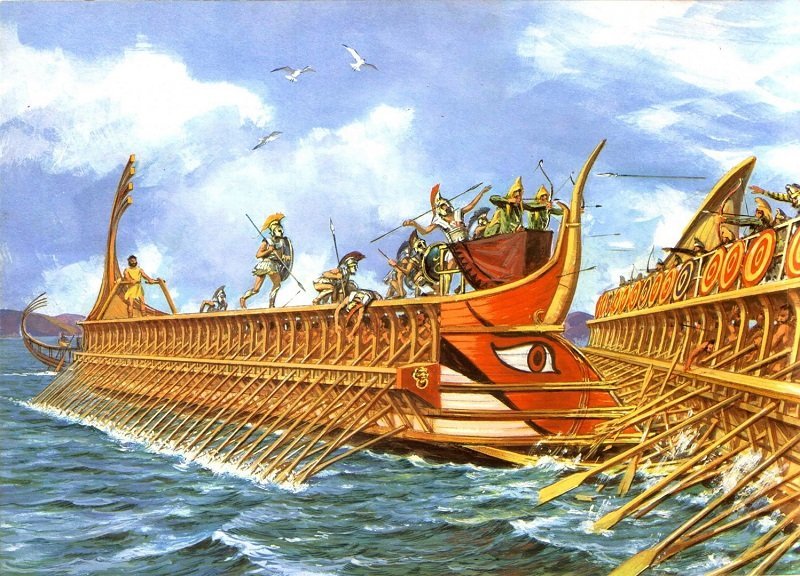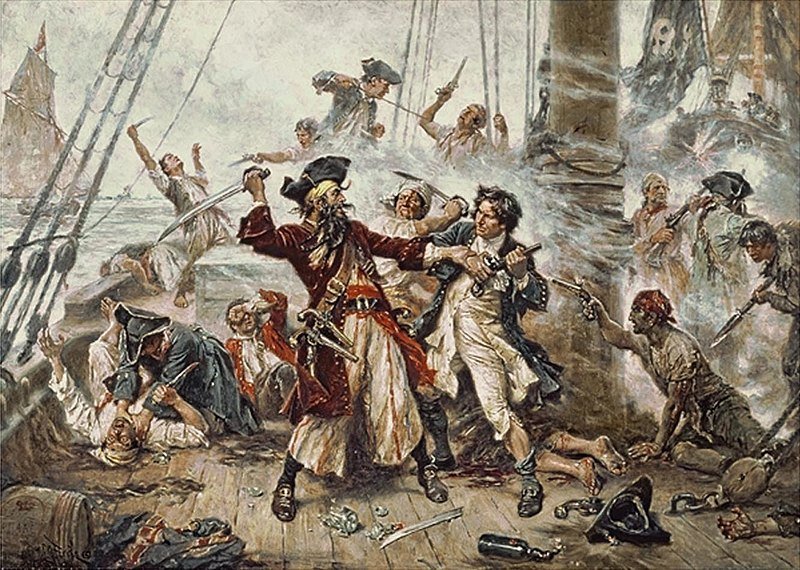Piracy has long been a topic of fascination and intrigue among both historians and the general public. The romanticized image of pirates and their adventurous lives on the high seas has captured the imagination of people for centuries. However, beneath the surface of this fascination lies a complex and dark history of piracy that spans millennia.
From the ancient Mediterranean world to the modern day, piracy has played a significant role in shaping maritime trade and global politics. In this article, we will take a closer look at the history of piracy.
Piracy during Ancient Times

Inscription on a clay tablet from the time of Pharo Echnaton (1350 BC) is considered the oldest evidence of the existence of pirates. The tablet records a pirate ship attacking North Africa. In addition, there is epigraphic evidence from Athens dating back to the 340s.
During the Ancient Greek and the Ancient Roman age, piracy was a common thing, and ships used to sail near the coasts, making them easy targets for pirates. Greek’s pirate base was in the Lipari Islands for over 2500 years, and Rome’s was in Istria. The Greek pirates, Illyrian, attacked Roman ships in the Adriatic Sea, and after that, Rome attacked Illyrians twice. Dorian Greek pirates had been based in Crete since the 10th century BC and lasted over 800 years.
In the 2nd century BC, the Rhodeans took control of the eastern Mediterranean, attempting to quell piracy. Soon, Crete became an uncomfortable place for the pirates.
Lycians were also notorious pirates, operating out of Lycia in the Antalya Province, which is now modern-day Turkey. Ramses The Third destroyed their havens in 1194, but after some time, the pirates recovered and became active again. However, the Romans destroyed the Lycian pirates in 67 BC.
Following the fall of the Roman Empire, pirate activity increased, with greater ambition. Lycian pirates were not suppressed until the patrols of British warships in the 18th and 19th centuries.
The famous Cilician pirates operated out of Cilicia, the southern shore of Asia Minor (modern-day Turkey). Cilicia’s geographical position made it an ideal location for pirates to set up their haven to operate along the Egyptian and Palestinian sea lines. Cilicia was the most significant pirate haven of ancient times and almost destroyed the Roman Empire at its peak. Pompey the Great almost ruined the pirates in 67 BC. The Cilician pirates were best known for capturing Julius Caesar in 78 BC and holding him on Pharmacua until the ransom was paid. But, Caesar’s people killed all the pirates responsible for his kidnapping.
Golden Age of Piracy

Piracy has been a constant threat on seas and oceans throughout history, with particular periods being especially notable. However, the most significant era of piracy occurred in the early 18th century and is referred to as the “Golden Age of Piracy”. During this time, many sea-trade routes were impacted by notorious sea robbers, such as Blackbeard and Bartholomew Roberts.
The Golden Age began in the mid-1680s, as the last buccaneers disappeared from the Caribbean. With the end of many wars and a lack of decent naval employment, many sailors and privateers found themselves without jobs. They turned to piracy as the best opportunity for them, as there was a lack of strong government in the Caribbean islands and other American colonies, which allowed pirates to sail free and pillage ships without any potential punishment.
While piracy largely took place in the Caribbean, it also occurred along the Atlantic coast, the West Coast of Africa, the Indian Ocean, and the South China Sea. Governor Woodes Rogers was among those responsible for suppressing piracy, bringing order not only to the Bahamas but to the entire Caribbean Sea. However, increased military presence and international anti-piracy laws eventually led to the end of the Golden Age of Piracy around 1730.
Modern Piracy

Despite being considered legendary figures from the past, piracy remains prevalent in different parts of the world. Modern pirates have evolved and adapted to new technologies, but their activities continue to mirror those of their predecessors. The escalation of piracy became a major problem in the early 1980s, and attacks have continued to rise steadily over the years. The Number of modern pirate attacks tripled between 1993 and 2003 alone, with nearly 200 cases reported in the first half of 2004 worldwide.
Modern piracy poses great challenges to law enforcement agencies, as arresting pirates is difficult due to limited authority over open waters, and many countries lack water police or military personnel to enforce laws on the sea. Pirates often use tricks to hide their identities or find cover behind flags of states they belong to or chose to associate with; making it hard to identify them.
The pirates operate in various parts of the world, with common hotspots in South and Southeast Asia, South America, and the Southern Red Sea. The modern Pirates also exist in two types- small-time pirates, who raid ships to accumulate loot and go unnoticed and the other is organized pirate groups working for criminal networks, individuals, or even with authorities.
Modern pirates have access to and use sophisticated tools and weapons like speed boats equipped with radars, sonars, multiple communication devices, machine guns, torpedoes, rocket-propelled grenades, and Molotov cocktails. Unlike their historical counterparts, these pirates have entirely different styles of attack, and there are even rumors which suggest they have access to satellite communications.
Their tactics for attacking vessels are similar to their predecessors and involve kidnapping people for ransom, robbery, and murder. The pirates usually target small cargo ships, preferring routes that require ships to slow down in narrow passages, while larger vessels are boarded before setting sail. While being skilled with technology, these modern-day pirates remain as fierce and dangerous as their historical counterparts.
